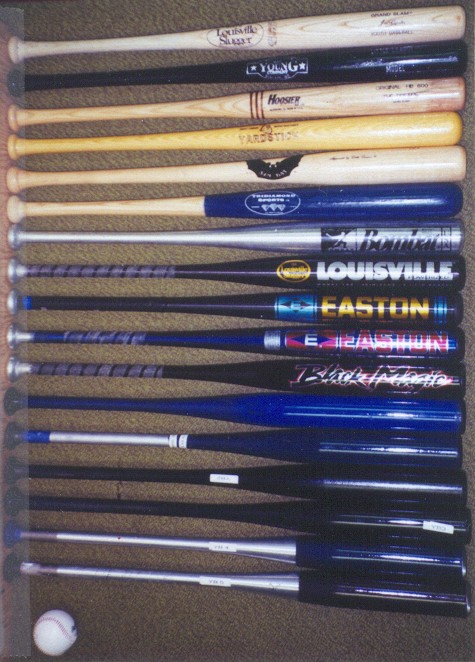Bat Weight, Swing Speed and Ball Velocity
By:
NOTE (3/27/08): This article is a summary of the published literature concerning batted-ball speed and bat WEIGHT. However, a great deal of recent research clearly indicates that the distribution of weight (as measured by the moment-of-inertia) is far more important than the weight itself. As a result, some of the conclusions summarized below are no longer entirely realistic. I am currently writing an article summarizing the influence of moment-of-inertia (MOI) on bat swing speed and batted-ball speed.
Variety in bat weights
A Little League player is looking for a new bat. Having decided on a certain length the player discovers that in addition to the choices of materials (wood, aluminum, or composite), and the various technologies (Vibration Reduction System, Nitrogen bladders, piezoelectric shock absorbers, double walled barrels, composite materials) there is also a wide selection of bat weights. Consider the following list of 30inch Little League bats which I currently have in the Acoustics Laboratory at Kettering University. Some of these bat models are older, and may be no longer be available, but the distribution of materials and weights are of interest.
|
|
It is interesting to note that the heaviest bat in this collection is an aluminum bat, not wood. Furthermore, there are different types of wood bats and aluminum bats at almost every weight. I'll deal with the issues of different wood types, metal-vs-wood and composite-vs-aluminum elsewhere on this website. For now let's assume that the material from which the bat is made does not matter, and focus solely on the issue of bat weight. Which would be better: a heavy bat which packs more punch or a lighter bat which a young player can swing easier? We might start by looking at whether professional players use heavy or light bats.
